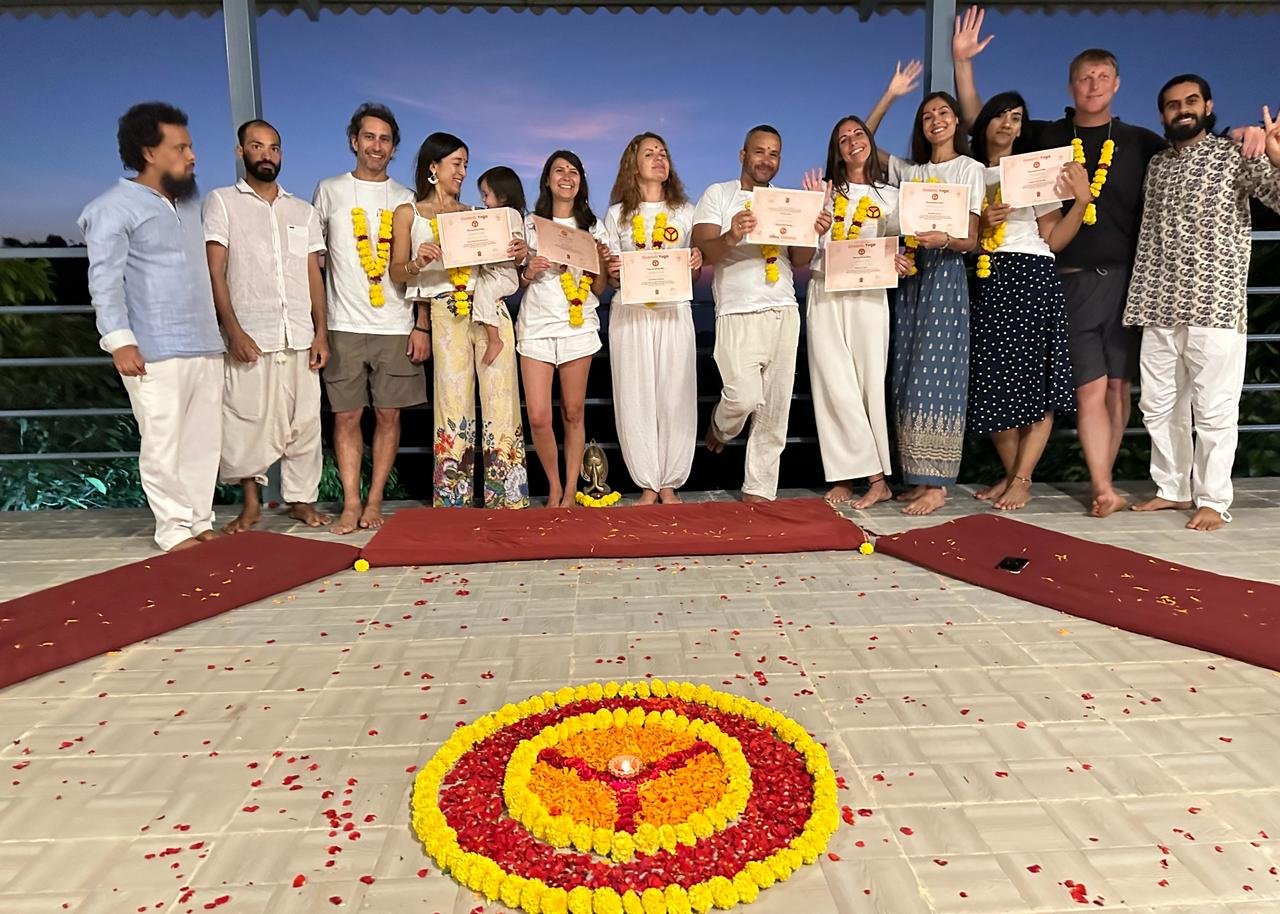Teacher training in yoga has really taken off these last years, as more and more students seeking to learn about yoga or, who knows, take the plunge and become a certified yoga instructor join such courses. For those already practising yoga, however, teacher training is a thrilling way of broadening one’s horizon; whether you have years of experience or are relatively new to the discipline, the experience is almost inevitably transformative—in both personal and professional terms.
This guide will cover everything you need to know about yoga teacher training: the benefits, how to choose the right program, types of certification, what to expect during training, and what life is like after you become a certified teacher.
Why Consider Yoga Teacher Training?
Yoga teacher training offers more than a path to teaching. It is an all-round process that helps you better your practice, which is on the following.
- Enhance your practice: Training is something that goes beyond the regular classes. You gain deeper insight and learning of advanced poses, meditation techniques, and deeper breathing practices.
- Personal growth: Many participants enjoy personal transformation as they learn more about themselves, their habits, and how they can live very well balanced.
- Build a career: If you want to share yoga with others, YTT serves as the credentials through which to begin teaching.
- Create a community: You are meeting like-minded individuals, becoming part of a global community of yogis and teachers.
For some, YTT is the next step toward becoming more knowledgeable about their personal practice, while for others, it can be a life-changing choice. The motivations for attending YTT are varied, but the result often is transformative.
Types of Yoga Teacher Training Programs
There are many styles of yoga and each style provides an individual approach toward practice as well as teaching. You need to choose a training program that aligns with your personal yoga journey before you commit to it.
a) 200-Hour Teacher Training
The 200 hour yoga teacher training in Goa offers the foundation of most training programs, completely studying the entirety of yoga postures, anatomy, philosophy, and teaching methodology. You will be qualified to register with Yoga Alliance after completing this program as a Registered Yoga Teacher (RYT-200).
- For: Beginner/Intermediate students desiring to teach or deepen their personal practice.
- Focus: Basic anatomy, yoga postures, breathing techniques (pranayama), and introductory yoga philosophy.
b) 300-Hour Advanced Teacher Training
Upon the completion of the 200-hour training, the 300-hour YTT covers deeper aspects of yoga on topics such as in-depth teaching techniques, more advanced philosophy, and specialised areas like restorative yoga or yoga therapy.
For: Students who have completed their 200-hour training and want to grow as teachers.
Focus: Advanced postures, teaching skills, mentorship, and more in-depth yoga philosophy.
c) 500-Hour Teacher Training
The 500-hour certification encompasses both the 200-hour and 300-hour training programs. This is a most advanced and comprehensive option, offering deep immersion into all aspects of yoga.
Who it is for: Professionals in yoga seeking to hone their expertise further and attain greater seniority within the yoga teaching community.
Focus: mastery of asanas, therapeutic use of yoga, anatomy, and yoga philosophy.
d) Specialty Certifications
Some YTT programs specialise in specific branches of yoga. Among these are the following:
- Vinyasa Yoga Teacher Training
- Ashtanga Yoga Teacher Training
- Prenatal Yoga Teacher Training
- Therapeutic Yoga Certification
These niche certification courses are available if you’re interested in teaching a specific population, such as pregnant women or therapeutic classes.
How to Choose the Right Yoga Teacher Training Program
Select the appropriate YTT program for your path. Here’s some important information to keep in mind:
a) Accreditation
Ensure that the program accredited institution is reputable, for example, Yoga Alliance, which provides the standard requirement in the industry for teaching training. A graduation from a recognized institution will qualify you to become eligible to register as a Yoga Alliance teacher, a most favoured stance in studios and employers, holding their employment contract as a tenant requires them to be registered with Yoga Alliance.
b) Teaching Style
There are several versions of yoga: Hatha, Vinyasa, Ashtanga, to mention a few. Select a course that aligns with the kind of yoga you enjoy practising. In case you are not sure about what to do, then choose courses that cover all types in detail.
c) In-Person or Online Training
Online YTT programs have gained popularity nowadays. The thing is that online training could be helpful if time is severely limited, but no one can beat the actual touch and feel of in-person training.
d) Program Location
If you are looking for an intense, all-encompassing experience, then seek out a retreat-style YTT in a tranquil environment, such as Bali, Costa Rica, or even back to the birthplace of yoga-India. This might just be the ticket if you need to unplug and get serious about your practice.
e) Duration and Schedule
Some YTT programs are intensive, with 4-6 weeks, while others are spread over several months or weekends so that you can run it in parallel with other commitments.
What to Expect During Yoga Teacher Training
Teacher training blends practice with theory and self-reflection. Some of the things you can expect are as follows:
a) Daily Yoga Practice
Training is very much inclusive of 2-3 hours of daily asana practice. That is the time wherein one enhances his postures, learns complex poses, and gets into a deeper physical practice.
b) Yoga Philosophy and History
You will learn about the historical roots of yoga-including the Yoga Sutras of Patanjali, Bhagavad Gita, and Tantric philosophy. It is important to know the spiritual and philosophical roots of yoga if you are ever going to be a well-rounded teacher.
c) Anatomy and Physiology
A huge part of YTT is learning about the human body. You will learn how muscles, bones, and joints function in yoga asana, as well as how to prevent injury in your students.
d) Pranayama and Meditation
Breath control (pranayama) and meditation are essential parts of yogic practice. You will learn several techniques of breathing and forms of meditation that will calm the mind and improve well-being in general.
e) Teaching Methodology
Teaching methodology forms the heart of any YTT program. You will learn how to sequence a class, use verbal and physical cues, and provide adjustments and modifications for various levels of students. You will also get to practise teaching your fellow trainees.
f) Self-Inquiry and Reflection
Yoga teacher training is even more an exploratory process about your inner development than about teaching. Journaling, introspective discussions, and self-reflection exercises are something you can expect from them so that you get acquainted with your inner self.
Post-Certification: What Happens Next?
Once you have completed your yoga teacher training, the journey is just beginning. Here’s what to consider post-certification:
a) Register with Yoga Alliance
Once accredited, the next thing would be registering with the Yoga Alliance as an RYT (Registered Yoga Teacher), recognized all over the world, thus allowing you to find teaching opportunities.
b) Be a Teacher
You can begin teaching at yoga studios, gyms, or privately offering classes. Many new teachers begin in small community classes or as a substitute to gain experience.
c) Continuing Education
Yoga is a lifelong practice. Continuing education is necessary to maintain your Yoga Alliance certification and to expand your knowledge. You can attend workshops, seek a 300-hour advanced certification, or delve into specialisation areas, such as teaching seniors or children.
d) Branch into Yoga Specialisations
As you continue to build your career, you decide you have other areas of specialisation in the yogic arts or a unique population. It could be prenatal yoga or yoga therapy for corporate populations-this is where you find your niche in a rapidly commodified yoga industry.
e) Take on the Business Side
Teaching yoga is not only mastering a set of physical postures but is also building up a sustainable career. Consider learning the business side of yoga: marketing oneself, personal branding, establishing a website, and promoting classes via social media.
Conclusion
A yoga teacher training transcends how to teach asanas. It is rooted deeply in realising yourself, and understanding the origins of yoga and sharing that with others. If you are training to be a full-time teacher or a contributing member to your class, your YTT program will unlock doors for learning about the self, help you gain professional experience, and guide you toward the benefits of wellness.
Work along with the journey, trust the process, and remember that yoga is as much about inner work as it is about outer practice.
Finally, embarking in a Best Yoga Teacher Training in Goa not only will you be investing in a future career, but really, you are starting down a life-altering path integrating mind, body, and spirit.






